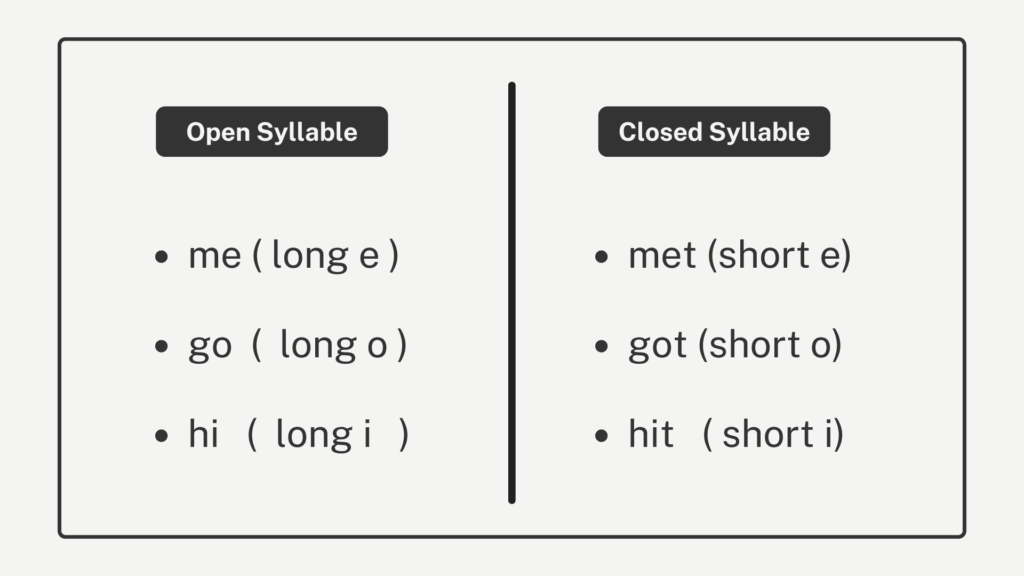Many students get stuck on pronunciation, leading to frustration and slower progress in their language learning. But what if there were a simple method that could change this?
Syllabication offers a clear way to help students understand word structure and improve their reading fluidity.
By learning how to split words into smaller parts, ESL students can boost their confidence and speaking skills.
This blog post will show you practical syllabication techniques that you can use in your classroom tomorrow. Let’s help your students tackle those tricky English words with ease.
What is Syllabication?
Syllabication is the process of breaking words into smaller parts called syllables. These small units make up the building blocks of words in English.
Each syllable contains one vowel sound, which may have one or more consonants.
How Syllabication Works
When teachers help students break down words, they make reading and speaking much easier. Think of syllables as the natural rhythm of a word when we say it out loud.
For example:
- ta-ble (2 syllables)
- win-dow (2 syllables)
- pen-cil (2 syllables)
Spoken vs. Written Syllables
There’s an important difference between how we divide syllables:
1. Spoken syllables focus on the sound patterns. They follow how our mouth moves when saying words. The stress and rhythm come from natural pauses in speech.
2. Written syllables follow spelling rules. They help with reading and writing tasks like hyphenation at line breaks.
Sometimes these two systems don’t match exactly. For instance, the word “rhythm” has two spoken syllables (rhyth-m) but no written vowel in the second syllable.
Teachers should point out these differences to ESL students. Understanding both types helps students improve their reading and speaking skills at the same time.
Why Syllabication Matters for ESL Learners?
ESL students face many challenges when learning English. Syllabication offers three key benefits:
Better pronunciation – Students who break words into syllables speak more naturally. They stress the right parts of words and sound more like native speakers.
Improved reading – When ESL learners see a long, unfamiliar word, they often panic. Syllabication gives them a strategy to tackle these words piece by piece.
Enhanced spelling and vocabulary – Understanding word parts helps students remember spelling patterns. They also learn to recognize word roots, prefixes, and suffixes, which builds their vocabulary faster.
Open vs. Closed Syllables

A syllable is a basic unit of sound that contains a vowel. Every word has at least one syllable. The word “cat” has one syllable, while “paper” has two.
Students can spot the pattern by looking at these examples. When a syllable ends with a vowel, the vowel says its name. When it ends with a consonant, the vowel makes a shorter sound.
Open Syllables:
- End with a vowel sound
- The vowel sound is usually long
- Examples: me, no, go
Closed Syllables:
- End with a consonant
- The vowel sound is usually short
- Examples: cat, hot, run
Teachers can use colored cards or hand motions to help students feel the difference between these two syllable types. This hands-on approach works well with ESL students who need extra practice with English sounds.
The Most Useful Syllabication Rules for ESL Students
Learning to break words into syllables helps ESL students improve their pronunciation and reading skills significantly. These simple, practical rules make English words much easier to understand and speak correctly in daily conversations.
1. Every Syllable Has a Vowel Sound
A basic rule that helps students split words correctly is that every syllable must contain at least one vowel sound. This foundation makes word breaking more logical.
A vowel sound can come from single vowels (a, e, i, o, u) or vowel teams (ai, ea, oo)
Examples:
- “ta-ble” (two syllables, each with one vowel sound)
- “beau-ti-ful” (three syllables, each containing a vowel sound)
- “strength” (one syllable with one vowel sound)
Teachers should note that some vowels are silent in English. The word “cake” has only one syllable despite having two vowels because the final ‘e’ is silent.
2. Divide Between Two Middle Consonants (VCCV Rule)
When two consonants appear between vowels in a word pattern (VCCV), the word typically splits between those consonants.
The pattern looks like: vowel + consonant + consonant + vowel
Examples:
- “win-ter” (not “wi-nter”)
- “bas-ket” (not “ba-sket”)
- “sis-ter” (not “si-ster”)
This rule helps students pronounce words more naturally. Some exceptions exist with consonant blends (like “ch,” “th”), which brings us to the next rule.
3. Keep Digraphs Together
Digraphs are two letters that make a single sound. These letter pairs always stay together when splitting words into syllables.
Common digraphs include:
- Consonant digraphs: ch, sh, th, ph, wh, ck
- Vowel digraphs: ea, ai, oa, ee
Examples of syllable breaks with digraphs:
- “tea-cher” (not “teac-her”)
- “wa-shing” (not “was-hing”)
- “mo-ther” (not “mot-her”)
ESL students find this rule helpful because it preserves sound units that might exist differently in their native languages.
4. Split Before a Single Middle Consonant (VC/V or V/CV)
When a single consonant appears between two vowels, the word may split either before or after the consonant, depending on the vowel sound.
V/CV pattern (split before the consonant):
- “ba-con”
- “ti-ger”
- “stu-dent”
VC/V pattern (split after the consonant):
- “riv-er”
- “nev-er”
- “mod-el”
The split often depends on whether the first vowel has a long or short sound. This rule affects word stress and helps students learn proper pronunciation.
5. Compound Words Split Between Base Words
Compound words combine two or more words. The most natural place to split these words is between the original words that form them.
Examples:
- “sun-shine”
- “bath-room”
- “foot-ball”
- “break-fast”
This rule makes longer words less intimidating for ESL students. By spotting familiar words within compounds, students can decode and pronounce them more easily.
6. Prefixes and Suffixes Stand Alone
Prefixes (added to the beginning) and suffixes (added to the end) form their own syllables when attached to base words.
Common prefixes:
re-, un-, dis-, pre-
Common suffixes:
-ing, -ed, -ly, -ment
Examples:
- “re-play”
- “help-less”
- “dis-like”
- “joy-ful-ly”
This rule is particularly useful for ESL students tackling academic vocabulary, which often contains multiple affixes.
7. Consonant-le Syllables Form Their Own Unit
Words ending with a consonant followed by “-le” create a special syllable pattern. The consonant joins with “le” to form the final syllable.
Examples:
- “ta-ble” (not “tab-le”)
- “bub-ble”
- “han-dle”
- “sim-ple”
Students find this pattern tricky at first, but learning it helps with many common English words. The consonant-le pattern creates a syllable even though the ‘e’ is silent.
Common Pitfalls and How to Overcome Them
ESL students often face specific challenges when learning to break words into syllables. These difficulties can slow down their reading progress and affect their pronunciation skills.
Many ESL learners make these typical errors when trying to divide words:
1. Splitting digraphs incorrectly: Students often separate letter pairs that make a single sound (like ‘ch’, ‘sh’, ‘th’). Example: splitting “teacher” as “te-ac-her” instead of “tea-cher”.
2. Ignoring vowel sounds: Some students miss the rule that each syllable needs at least one vowel sound. They might try to break “street” as “s-treet” instead of keeping it as one syllable.
3. Misplacing syllable breaks: Placing breaks in the wrong spots affects pronunciation. Example: breaking “competition” as “com-pe-tit-ion” instead of “com-pe-ti-tion”.
4. Overlooking silent letters: Words with silent letters confuse students. They might count “knife” as two syllables instead of one.
Effective Correction Strategies and Memory Aids
| Teaching Method | How It Works | Memory Aid/Rule | Example |
|---|---|---|---|
| Clap or Tap | Students clap once per syllable they hear | Every syllable needs a vowel | “Hap-py” = 2 claps |
| Mirror Practice | Watch mouth movements to see syllable changes | Keep blends together | “Str-eet” = mouth shape shifts |
| Visual Aids | Use colors or arcs to show syllable divisions | Divide between double consonants | “Let-ter” = split between t’s |
Regular practice with these strategies improves reading fluency and clearer speech for ESL students.
Takeaways
Syllabication isn’t just a reading tool; it’s a path to language confidence for your ESL students. By teaching them to break words into manageable chunks, you give them skills that extend beyond the classroom.
Start with simple words before moving to complex ones. Even just five minutes of syllable practice each day builds skills that last a lifetime.
Teachers can start small by adding just one syllabication activity to their weekly lessons.
Want to share your experiences? Leave a comment below about how syllabication techniques have worked in your classroom.




